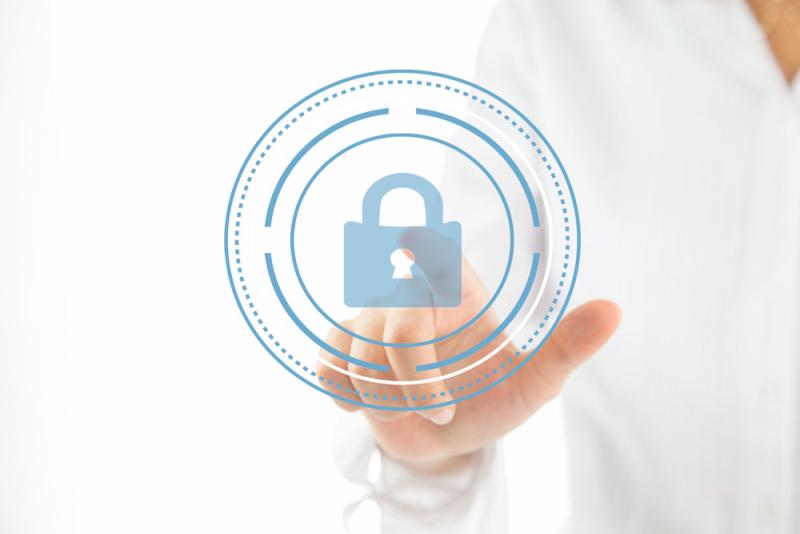Key points
- Many older adults are concerned with maintaining their privacy. However, some people are willing to compromise privacy and accept being monitored by surveillance technologies if it means being able to continue living safely and independently in their own homes.
- Many older adults consider living at home with surveillance less of an invasion of privacy than residing in residential aged care.
- Older people and those caring for them may consider the use of technologies with integrated cameras a threat to both privacy and personal dignity.
- Within aged care, it is important to consider the balance between technology use and the privacy and safety of the people receiving care, as well as those providing it.
In the context of aged care, privacy refers to the right of older people to control their personal information, make choices about their care and have a private space where they can feel comfortable and secure. [1] Privacy is an important component of aged care as it helps older adults to maintain their dignity and independence whilst receiving support with activities such as washing and dressing. Individuals receiving aged care have the right to control who has access to their health information. [1] Privacy is an important component of aged care as it can help to build trust between older people and their service providers and care team, thereby improving the quality of care provided.
With the increasing use of technology in aged care, it is important to consider how these innovations affect the privacy of older adults. There are many benefits to working with technology in aged care. Those now commonplace include remote monitoring, telehealth, and assistive devices. Yet technology use can expose older adults to security risks and make them vulnerable to negative experiences. [2] Aged care services need to ensure there are measures in place that protect the privacy of people receiving care as well as the aged care workforce supporting them. By prioritising privacy in the use of technology, innovative ways of working and providing aged care are more likely to enhance the quality of care and older people’s quality of life. [3]
This evidence theme on privacy and safety summarises one of the key topics we identified in a scoping review of human factors and technology in aged care. We identified 10 studies on this topic. [2, 4-12] If you need more information on this topic, try using one of our PubMed searches below.
The scoping review found several specific privacy concerns around the use of technology in aged care. However, older people, their families, and the staff caring for them often varied in their opinions. The included studies suggest that:
- Maintaining privacy was important for older people. However, some people were willing to compromise on their privacy needs by accepting surveillance technologies when the support continued independent living. Older adults considered living at home with surveillance technology as more private than living in a long-term care facility. [2]
- The capability of robots to watch people was a concern for many older adults. [12] However, the ability of the robot to call emergency services for help was considered a useful feature. [12]
- Privacy concerns often differed by technology type. For example, video cameras were deemed to violate privacy as an unknown person could be watching. Technologies that measure health functions (such as heart rate) were viewed as less invasive. People considered the ability to switch off monitoring devices a positive feature which can allow older adults to maintain some level of privacy. [2]
- The privacy of care workers and care recipients could be compromised through the use of robots and devices with integrated cameras. [13] Family members had concerns around the use of telepresence robots in residential aged care. [14] Telepresence robots allow someone at a remote location to see and engage with someone at the robot’s end. Family members using these technologies felt that the cameras used for communicating with the older person created a sense of ‘spying’, especially if the older person was unaware that a video connection had been initiated. [14]
- Older people raised general concerns around the use of video conferencing systems and the ability of unknown people to access their discussion and personal information, posing risks to privacy and cybersecurity. [15]
- Some viewed the use of cameras in residents’ rooms to ensure safety (e.g., assisting in early falls detection) as a threat to both privacy and dignity. [16]
- Older adults being monitored for safety reasons in their own homes were concerned that ‘big brother’ could be watching. In a home care context, they were worried that other members of the household would not like to be watched. [13, 17]
- Some care workers perceived the use of surveillance cameras in aged care facilities and residents’ rooms as a message from the organisation that they could not be trusted to provide for the care recipient’s best interests. [16] This has the potential to reduce staff confidence in their own ability to provide care.
- Although care workers might consider privacy protection important for older adults, they were more inclined to overlook privacy concerns in favour of the benefits provided by aged care monitoring devices. [4] These benefits included increased physical safety, independence, health outcomes, and early fall detection.
While privacy refers to the ability of older adults to control who can access their data, safety refers to the protection of older adults from physical or psychological harm. The included articles reported concerns for the safe use of technology in aged care settings suggesting:
- The safe use of robotics and autonomous systems in long-term care settings was a significant concern for carers and care recipients. [13]
- Older people highly valued the feeling of safety. [12] For example, some older adults reported that the use of a robot to help with medicine management increased their sense of safety, as they did not have to remember the time to take medications and they were less likely to be hospitalised due to a medication error. [18]
- The unpredictability of robot behaviours and movement may cause safety risks. Care workers were concerned that robots and other technologies could become a safety hazard and were unsure who would be liable in the case an injury occurred. [13] However, through design principles such as collision avoidance and safe navigation, safety can be integrated in the design process.
Older people can be supported by technology in aged care. However, appropriate and safe use of technology is important to protect the privacy and dignity of older adults. Despite the benefits that technology can provide in aged care, such as smart homes that monitor health status, detect emergencies, and provide reminders, [19] the use of technology connected to the internet may increase the risk of data breaches and technology failures, and reduce privacy. [20] Safe use of technology in aged care is crucial to ensure older adults receive the benefits of technology in a safe and supported environment.
When integrating technology into aged care services, safety should be one of the top priorities and considered in the design, implementation, and ongoing management of such devices. Technology should be user-friendly, accessible, and secure, and adequate training should be provided to support staff, care recipients, and their their families. [1] Regular risk assessments and testing should be carried out to identify potential safety issues, and privacy and ethical considerations should be made when collecting and storing personal data. Aged care providers should also have policies and procedures in place for responding to incidents involving the use of technology.
This evidence theme is based on the available published research on this topic which is limited in size and quality. More research is needed in this important area as technologies and the ways they are employed in caring for older people continue to develop apace with potentially unforeseen ethical and legal implications. For more information on data safety please see the cybersecurity concerns theme.
- Aged Care Quality and Safety Commission. Privacy policy [Internet]. Canberra, ACT: ACQSC; 2022 [cited 2023 Mar 20]. Available from: https://www.agedcarequality.gov.au/about-us/legislation-and-policies/privacy-policy
- Sundgren S, Stolt M, Suhonen R. Ethical issues related to the use of gerontechnology in older people care: A scoping review. Nurs Ethics. 2020;27(1):88-103.
- Hosseinabadi R, Momtaz YA, Shahboulaghi FM, Abbaszadeh A, Pournia Y, Kamrani AA. Aged care ethical values: A content analysis of the literature. J Clin Diagn Res. 2019;13(12):LE01-LE06.
- Alkhatib S, Waycott J, Buchanan G, Grobler M, Shuo W. Caregivers’ perspectives on privacy in aged care monitoring devices. Stud Health Technol Inform. 2021(276):7-13.
- Blinka MD, Buta B, Bader KD, Hanley C, Schoenborn NL, McNabney M, et al. Developing a sensor-based mobile application for in-home frailty assessment: A qualitative study. BMC Geriatr. 2021;21(1).
- Bourbonnais A, Rousseau J, Lalonde M-H, Meunier J, Lapierre N, Gagnon M-P. Conditions and ethical challenges that could influence the implementation of technologies in nursing homes: A qualitative study. Int J Older People Nurs. 2019;14(4):e12266.
- Chan A, Cohen R, Robinson KM, Bhardwaj D, Gregson G, Jutai JW, et al. Evidence and user considerations of home health monitoring for older adults: Scoping review. JMIR Aging. 2022;5(4).
- Curtis K, Brooks S. Digital health technology: Factors affecting implementation in nursing homes. Nurs Older People. 2020;32(2):14-21.
- Grosen SL, Hansen AM. Sensor-floors: Changing work and values in care for frail older persons. Sci Technol Human Values. 2021;46(2):254-274.
- Johannessen TB, Storm M, Holm AL. Safety for older adults using telecare: Perceptions of homecare professionals. Nurs Open. 2019;6(3):1254-1261.
- Leikas J, Kulju M. Ethical consideration of home monitoring technology: A qualitative focus group study. Gerontechnology. 2018;17(1):38-47.
- Poulsen A, Fosch-Villaronga E, Burmeister OK. Cybersecurity, value sensing robots for LGBTIQ+ elderly, and the need for revised codes of conduct. Aust J Inf Sys. 2020;24(0).
- Tan SY, Taeihagh A, Tripathi A. Tensions and antagonistic interactions of risks and ethics of using robotics and autonomous systems in long-term care. Technol Forecast Soc Change. 2021;167.
- Niemelä M, van Aerschot L, Tammela A, Aaltonen I, Lammi H. Towards ethical guidelines of using telepresence robots in residential care. Int J Soc Robot. 2021;13(3):431-439.
- Moyle W, Jones C, Murfield J, Liu F. ‘For me at 90, it’s going to be difficult’: Feasibility of using iPad video-conferencing with older adults in long-term aged care. Aging Ment Health. 2020;24(2):349-352.
- Berridge C, Halpern J, Levy K. Cameras on beds: The ethics of surveillance in nursing home rooms. AJOB Empir Bioeth. 2019;10(1):55-62.
- Hung L, Mann J, Perry J, Berndt A, Wong J. Technological risks and ethical implications of using robots in long-term care. J Rehabil Assist Technol Eng. 2022;9.
- Turjamaa R, Vaismoradi M, Kangasniemi M. Older home care clients' experiences of digitalisation: A qualitative study of experiences of the use of robot for medicines management. Scand J Caring Sci. 2022.
- Carnemolla P. Ageing in place and the internet of things – how smart home technologies, the built environment and caregiving intersect. Visualization in Engineering. 2018;6(1):7.
- Coventry L, Branley D. Cybersecurity in healthcare: A narrative review of trends, threats and ways forward. Maturitas. 2018;113:48-52.
Connect to PubMed evidence
This PubMed topic search is focused on research conducted in aged care settings (i.e., home care and residential aged care). You can choose to view all citations or free full-text articles.


